Zika Virus May Now Be Tied To Another Brain Disease
Zika Virus May Now Be Tied to Another Brain Disease
The Zika virus may be associated with an autoimmune disorder that attacks the brain’s myelin similar to multiple sclerosis, according to a small study that was presented at the American Academy of Neurology’s 68th Annual Meeting in Vancouver, Canada, April 15 to 21, 2016.
“Though our study is small, it may provide evidence that in this case the virus has different effects on the brain than those identified in current studies,” said study author Maria Lucia Brito Ferreira, MD, with Restoration Hospital in Recife, Brazil. “Much more research will need to be done to explore whether there is a causal link between Zika and these brain problems.”
For the study, researchers followed people who came to the hospital in Recife from December 2014 to June 2015 with symptoms compatible with arboviruses, the family of viruses that includes Zika, dengue and chikungunya. Six people then developed neurologic symptoms that were consistent with autoimmune disorders and underwent exams and blood tests. The authors saw 151 cases with neurological manifestations during a period of December 2014 to December 2015. All of the people came to the hospital with fever followed by a rash. Some also had severe itching, muscle and joint pain and red eyes. The neurologic symptoms started right away for some people and up to 15 days later for others.
Of the six people who had neurologic problems, two of the people developed acute disseminated encephalomyelitis (ADEM), an attack of swelling of the brain and spinal cord that attacks the myelin, which is the coating around nerve fibers. In both cases, brain scans showed signs of damage to the brain’s white matter. Unlike MS, acute disseminated encephalomyelitis usually consists of a single, attack that most people recover from within six months. In some cases, the disease can reoccur. Four of the people developed Guillain-Barré syndrome (GBS), a syndrome that involves myelin of the peripheral nervous system and has a previously reported association with the Zika virus.
When they were discharged from the hospital, five of the six people still had problems with motor functioning. One person had vision problems and one had problems with memory and thinking skills.
Tests showed that the participants all had Zika virus. Tests for dengue and chikungunya were negative. “
This doesn’t mean that all people infected with Zika will experience these brain problems. Of those who have nervous system problems, most do not have brain symptoms,” said Ferreira. “However, our study may shed light on possible lingering effects the virus may be associated with in the brain.”
“At present, it does not seem that ADEM cases are occurring at a similarly high incidence as the GBS cases, but these findings from Brazil suggest that clinicians should be vigilant for the possible occurrence of ADEM and other immune-mediated illnesses of the central nervous system,” said James Sejvar, MD, with the Centers for Disease Control and Prevention in Atlanta and member of the American Academy of Neurology. “Of course, the remaining question is ‘why’–why does Zika virus appear to have this strong association with GBS and potentially other immune/inflammatory diseases of the nervous system? Hopefully, ongoing investigations of Zika virus and immune-mediated neurologic disease will shed additional light on this important question.”
More Posts from Ritasakano and Others

Árvore Pirâmide em feltro bordada. By Rita Sakano
2017 Was One of Our Planet’s Hottest Years on Record

We just finished the second hottest year on Earth since global temperature estimates first became feasible in 1880. Although 2016 still holds the record for the warmest year, 2017 came in a close second, with average temperatures 1.6 degrees Fahrenheit higher than the mean.

2017’s temperature record is especially noteworthy, because we didn’t have an El Niño this year. Often, the two go hand-in-hand.
El Niño is a climate phenomenon that causes warming of the tropical Pacific Ocean waters, which affect wind and weather patterns around the world, usually resulting in warmer temperatures globally. 2017 was the warmest year on record without an El Niño.

We collect the temperature data from 6,300 weather stations and ship- and buoy-based observations around the world, and then analyze it on a monthly and yearly basis. Researchers at the National Oceanic and Atmospheric Administration (NOAA) do a similar analysis; we’ve been working together on temperature analyses for more than 30 years. Their analysis of this year’s temperature data tracks closely with ours.

The 2017 temperature record is an average from around the globe, so different places on Earth experienced different amounts of warming. NOAA found that the United States, for instance, had its third hottest year on record, and many places still experienced cold winter weather.

Other parts of the world experienced abnormally high temperatures throughout the year. Earth’s Arctic regions are warming at roughly twice the rate of the rest of the planet, which brings consequences like melting polar ice and rising sea levels.

Increasing global temperatures are the result of human activity, specifically the release of greenhouse gases like carbon dioxide and methane. The gases trap heat inside the atmosphere, raising temperatures around the globe.

We combine data from our fleet of spacecraft with measurements taken on the ground and in the air to continue to understand how our climate is changing. We share this important data with partners and institutions across the U.S. and around the world to prepare and protect our home planet.
Earth’s long-term warming trend can be seen in this visualization of NASA’s global temperature record, which shows how the planet’s temperatures are changing over time, compared to a baseline average from 1951 to 1980.
Learn more about the 2017 Global Temperature Report HERE.
Discover the ways that we are constantly monitoring our home planet HERE.
Make sure to follow us on Tumblr for your regular dose of space: http://nasa.tumblr.com.
Imagem Tempo Luz

Photographer Junku Nishimura
Incomprehensible: The Scale of The Universe
Muito ☺️ fofo!! Lindo trabalho.

Just a couple of sloths hanging out by CutieClicker




Jupiter’s Galilean Moons
Io - Jupiter’s volcanic moon
Europa - Jupiter’s icy moon
Ganymede - Jupiter’s (and the solar system’s) largest moon
Callisto - Jupiter’s heavily cratered moon
Made using: Celestia, Screen2Gif & GIMP Based on: @spaceplasma‘s solar system gifs Profile sources: http://solarsystem.nasa.gov/planets, http://nssdc.gsfc.nasa.gov/planetary/factsheet/joviansatfact.html
Interessante!!



Sensation of Taste Is Built into Brain
Roast turkey. Stuffing. Mashed potatoes and gravy. Pie. Thanksgiving conjures up all sorts of flavors. If you close your eyes you can almost taste them. In fact, one day you may be able to—without food.
Scientists from Columbia University have figured out how to turn tastes on and off in the brain using optogenetics—a technique that uses penetrating light and genetic manipulation to turn brain cells on and off. They reported their findings in an article published in Nature. By manipulating brain cells in mice this way, the scientists were able to evoke different tastes without the food chemicals actually being present on the mice’s tongues.
The experiments “truly reconceptualize what we consider the sensory experience,” said Charles Zuker, head of the Zuker lab at Columbia and co-author on the paper. The results further demonstrate “that the sense of taste is hardwired in our brains,” Zuker said, unlike our sense of smell, which is strongly linked to taste but almost entirely dependent on experience.
Typically when we eat, the raised bumps, or papillae, that cover our tongues, pick up chemicals in foods and transmit tastes to the brain. There are five main types of papillae corresponding to each of the five basic tastes—sweet, sour, salty, bitter and umami. Contrary to popular belief, these aren’t clustered in particular places on the tongue, with bitter in the back and sweet at the front, but are spaced about evenly on the tongue.
A taste map may in fact exist, but it appears to be in the brain rather than on the tongue. First the researchers singled out the mice’s sweet and bitter taste centers in the brain, which are separated by approximately two millimeters in the insula. They concentrated on only sweet and bitter because the two are the most distinct from each other and also the most salient for humans, mice and other animals due their evolutionary importance to survival. Sweet usually indicates the presence of nutrients, whereas bitter signals potential danger of poison.
Zuker and his team then optogenetically stimulated the areas with light and in a series of behavioral tests, were able to have the mice taste sweet or bitter with only plain water. When the researchers activated the sweet neurons, they observed behavior consistent what with happens when mice normally encounter sweet foods: their licking increased significantly, even when the animals’ thirst was satiated. When the scientists stimulated neurons associated with bitter flavors, the mice stopped licking, seemed to scrub at their tongues and even gagged, depending on the level of optogenetic stimulation.
The researchers then performed the tests on animals that had never tasted sweet or bitter in their lives and found the same results. In the last set of experiments the researchers applied to the tongue of the mice chemicals that tasted sweet and bitter and compared their reactions to what happened when they simply stimulated the corresponding neurons optogenetically. There was no difference in the way the animals responded, “proving taste is hardwired in the brain,” Zuker said.
This doesn’t mean that there is no such thing as an “acquired taste,” Zuker clarified. For example, hákarl, fermented shark meat and national dish of Iceland, once called “the single worst, most disgusting and terrible tasting thing,” by famously acerbic food critic Anthony Bourdain is relished by many on the Nordic island nation. Humans are more complicated than mice. Taste can also be shaped by experience and culture. But the basics of this sensation are present from the beginning.
“Every baby smiles to sweet and frowns for bitter,” Zuker explained. “Taste mostly retains that hardwired response unless there is something that supersedes it. There are some things we consume [that] are innately aversive. But we take the gain with the bad if they have a positively reinforcing result.” Coffee or alcohol, for instance, are distinctly bitter, but many people learn to enjoy them over time due to the feelings of stimulation and inebriation they bring, respectively.
Gary Beauchamp, president of the Monell Chemical Senses Center in Pennsylvania, calls the research “a very clear and elegant approach,” confirming the long-standing hypothesis that taste is indeed evolutionarily hardwired. But Beauchamp also notes that sweet and bitter compounds can influence each other in the mouth to affect taste before they reach the brain. “In the real world, where foods are mixtures of things, it’s much more complex than what this study would suggest. Nevertheless, this is excellent work showing that these pathways are innately organized,” he said.
Zuker is aware that sweet and bitter are at the extremes of the taste spectrum and may not be representative of all tastes. But he expects similar results testing other tastes, which are also evolutionarily based. Salt, for example, signals electrolytes. “The next question is how activity in these cortical fields integrates with rest of brain,” to form experience and lasting taste memories – such as those we make at Thanksgiving.
Source: Scientific American
Fantástico!!

What’s that green streak in front of the Andromeda galaxy? A meteor. While photographing the Andromeda galaxy last Friday, near the peak of the Perseid Meteor Shower, a sand-sized rock from deep space crossed right in front of our Milky Way Galaxy’s far-distant companion. The small meteor took only a fraction of a second to pass through this 10-degree field. The meteor flared several times while braking violently upon entering Earth’s atmosphere. The green color was created, at least in part, by the meteor’s gas glowing as it vaporized. Although the exposure was timed to catch a Perseids meteor, the orientation of the imaged streak seems a better match to a meteor from the Southern Delta Aquariids, a meteor shower that peaked a few weeks earlier
Object Names: Andromeda Galaxy
Image Type: Astronomical
Credit: Fritz Helmut Hemmerich
Time And Space
👏
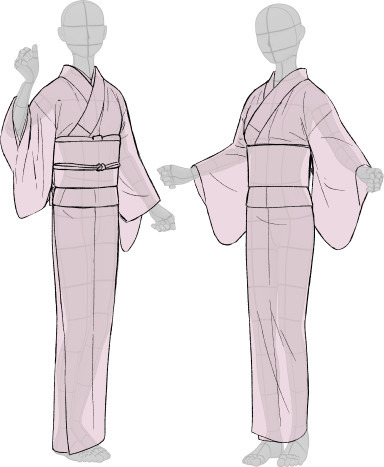
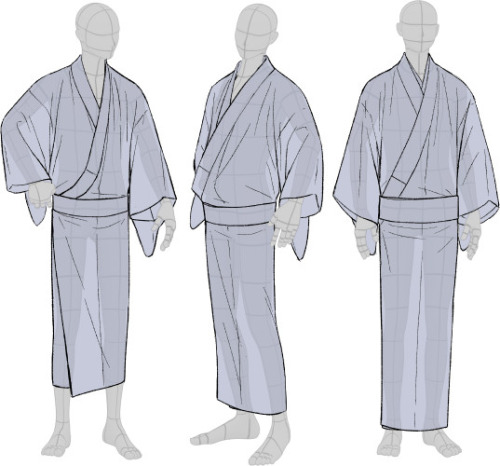
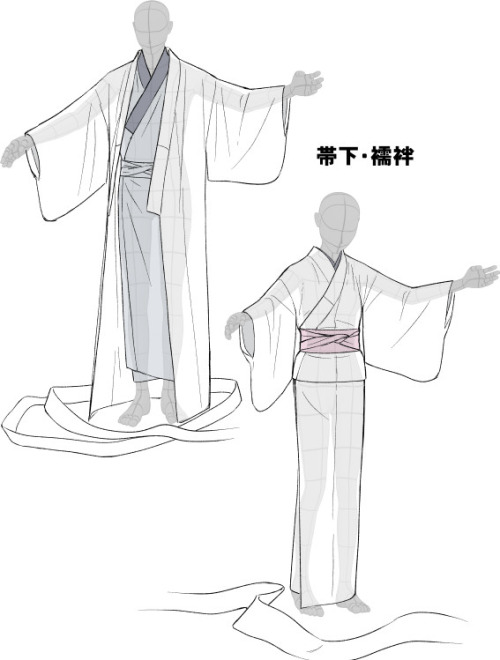
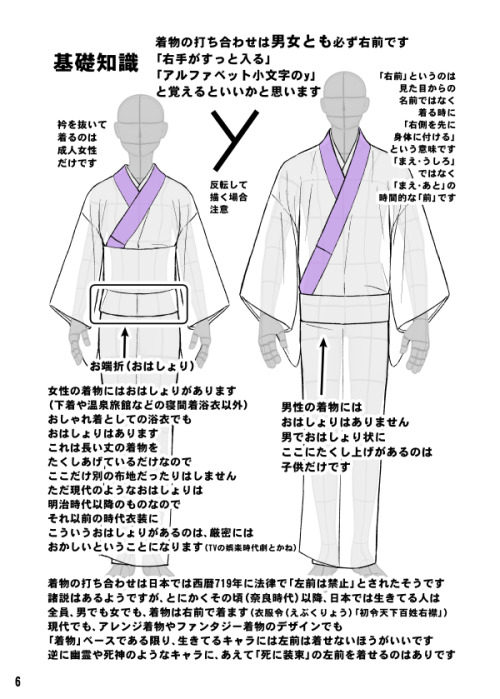
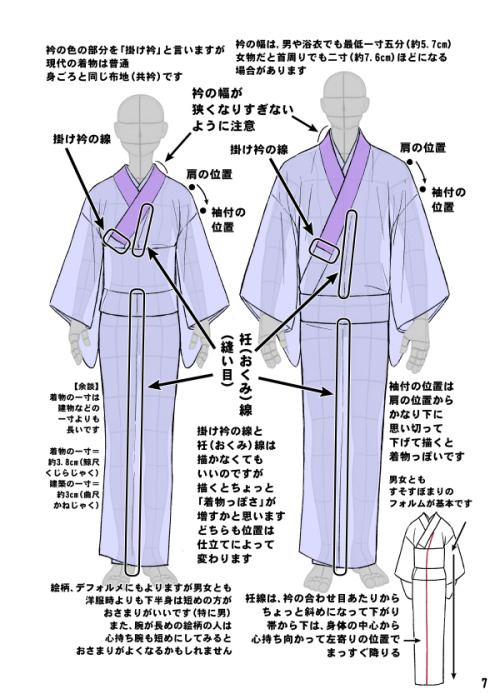
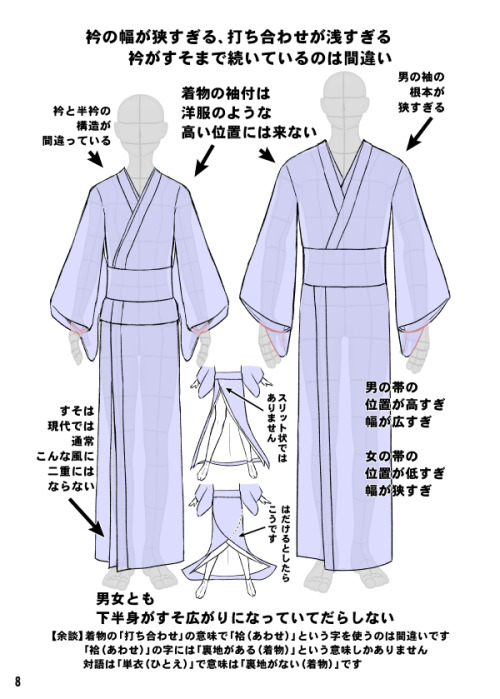
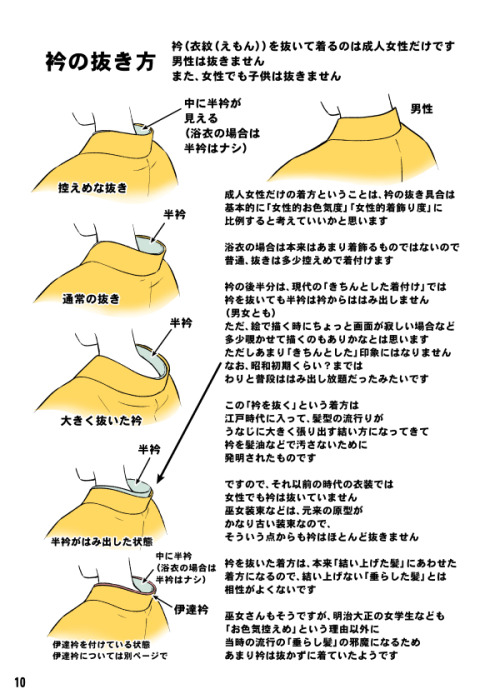

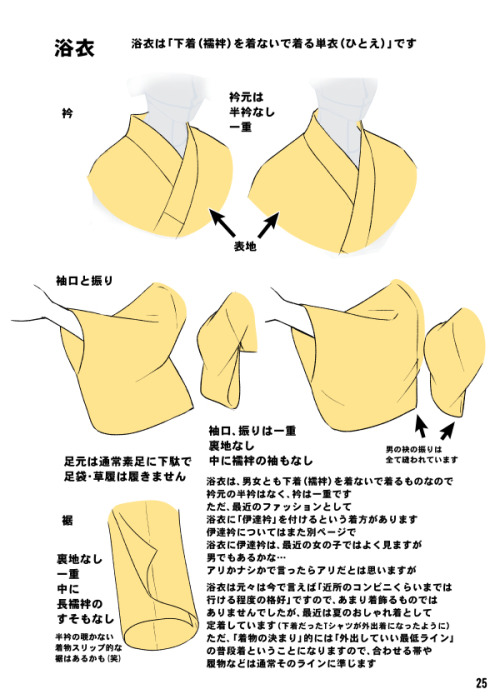
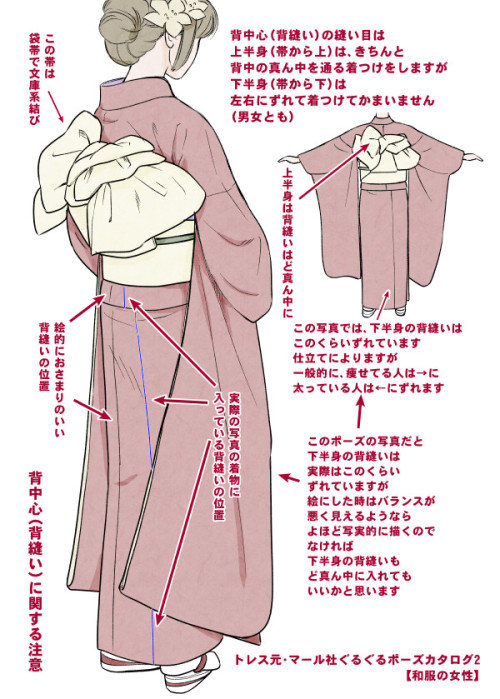
Kimono drawing guide ½, by Kaoruko Maya (tumblr, pixiv, site). Booklet is available in pdf for ¥ 900 here.
Here you can see:
female kimono and yukata (note how the juban underwear peeks when in kimono + how belts differ)
male yukata and kimono (note how the juban underwear peeks when in kimono)
dressing up: male (kimono is not closed yet) and female (kimono closed with datejime belt and ready to put on obi)
differences between female and male kimono once dressed (note how the collars and belts set)
common drawing mistakes (compare with previous picture: shoulders lines are too defined, there is a double hem, collars are narrow, belt is not at the right place etc)
women back collar (the lower the sexier) and men back collar (close to the nape)
back and sleeves differences between men and women
collars and sleeves and view of how kimono drapes around body
Furisode back (long sleeves kimono) and formal furisode obi knot example
-
 pleasurehunter2000 liked this · 4 years ago
pleasurehunter2000 liked this · 4 years ago -
 artificialcherryflavour liked this · 5 years ago
artificialcherryflavour liked this · 5 years ago -
 scienceeeee-blog reblogged this · 8 years ago
scienceeeee-blog reblogged this · 8 years ago -
 macandlula-blog reblogged this · 8 years ago
macandlula-blog reblogged this · 8 years ago -
 jenericalname reblogged this · 8 years ago
jenericalname reblogged this · 8 years ago -
 slothfulthings reblogged this · 9 years ago
slothfulthings reblogged this · 9 years ago -
 naobaes reblogged this · 9 years ago
naobaes reblogged this · 9 years ago -
 bonniejng liked this · 9 years ago
bonniejng liked this · 9 years ago -
 shmeeble-blog reblogged this · 9 years ago
shmeeble-blog reblogged this · 9 years ago -
 pheobewankenobi liked this · 9 years ago
pheobewankenobi liked this · 9 years ago -
 ritasakano reblogged this · 9 years ago
ritasakano reblogged this · 9 years ago -
 ritasakano liked this · 9 years ago
ritasakano liked this · 9 years ago -
 alienaficionados reblogged this · 9 years ago
alienaficionados reblogged this · 9 years ago -
 alienaficionados liked this · 9 years ago
alienaficionados liked this · 9 years ago -
 tastywofl reblogged this · 9 years ago
tastywofl reblogged this · 9 years ago -
 fernando-pineda-m liked this · 9 years ago
fernando-pineda-m liked this · 9 years ago -
 doomroar liked this · 9 years ago
doomroar liked this · 9 years ago -
 mikaalsen liked this · 9 years ago
mikaalsen liked this · 9 years ago -
 bibibritain reblogged this · 9 years ago
bibibritain reblogged this · 9 years ago -
 scienceasfuck liked this · 9 years ago
scienceasfuck liked this · 9 years ago -
 kabrox18 liked this · 9 years ago
kabrox18 liked this · 9 years ago -
 mim70 liked this · 9 years ago
mim70 liked this · 9 years ago -
 mimimyers1214-blog liked this · 9 years ago
mimimyers1214-blog liked this · 9 years ago -
 takenforgrantedtalents liked this · 9 years ago
takenforgrantedtalents liked this · 9 years ago -
 sachan421 liked this · 9 years ago
sachan421 liked this · 9 years ago -
 logrowsky liked this · 9 years ago
logrowsky liked this · 9 years ago -
 logrowsky reblogged this · 9 years ago
logrowsky reblogged this · 9 years ago -
 blairdrof liked this · 9 years ago
blairdrof liked this · 9 years ago -
 missmotherhen reblogged this · 9 years ago
missmotherhen reblogged this · 9 years ago -
 missmotherhen liked this · 9 years ago
missmotherhen liked this · 9 years ago -
 geekballin reblogged this · 9 years ago
geekballin reblogged this · 9 years ago -
 ohhleelee liked this · 9 years ago
ohhleelee liked this · 9 years ago -
 alexrandomkat liked this · 9 years ago
alexrandomkat liked this · 9 years ago -
 msdeetz liked this · 9 years ago
msdeetz liked this · 9 years ago -
 engineeringworldhealth reblogged this · 9 years ago
engineeringworldhealth reblogged this · 9 years ago -
 swayth liked this · 9 years ago
swayth liked this · 9 years ago -
 poisonous-creativity reblogged this · 9 years ago
poisonous-creativity reblogged this · 9 years ago -
 brainsandbodies reblogged this · 9 years ago
brainsandbodies reblogged this · 9 years ago